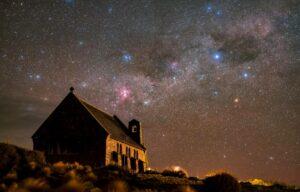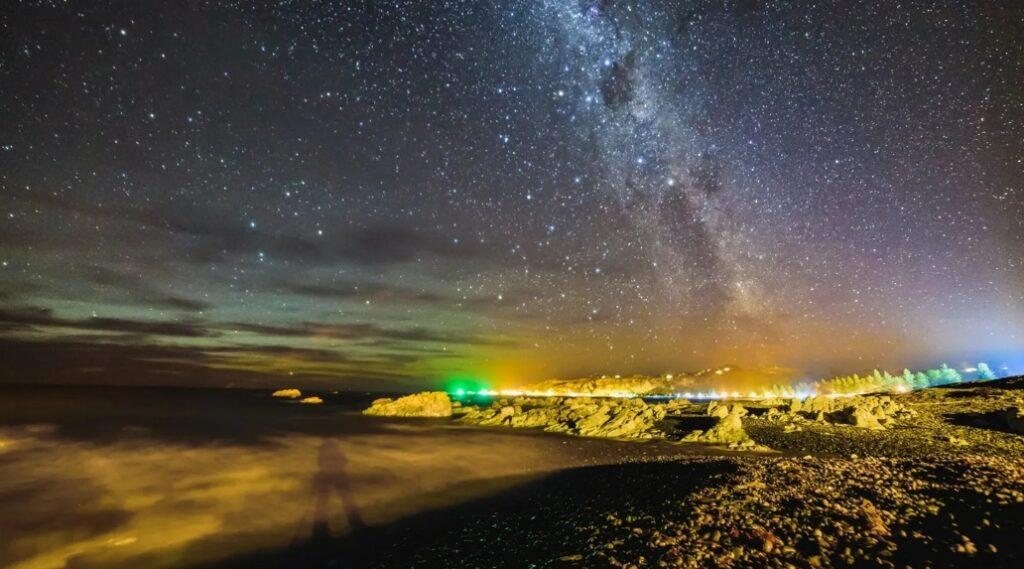Led by the Maori expert community, New Zealand plans to reduce light pollution on an unprecedented scale
On a clear night over Lake Tekapo, a township in the heart of New Zealand’s South Island, the sky is studded with countless bright stars. Light pollution affects 80% of the planet, making this stellar nighttime sight rare, but not on this island nation of 5 million people.
In fact, New Zealand aspires to be certified as a dark sky nation by the International Dark Sky Association (IDSA), an unprecedented goal for a country the size of New Zealand.
The Maori people lead the initiative spreading the ecological and cultural importance of the preservation of the dark sky.
“Our language [te reo Māori] and different cultural practices and beliefs stem from our observations of the night sky,” says Rangi Mātāmua (of Ngāi Tūhoe tribal descent), an astronomer and professor of Mātauranga Māori (Māori lore) at Massey University . The Maori people use the maramataka (lunar calendar), for example, to identify the best times and seasons for planting, harvesting, fishing and hunting.
New Zealand’s unusually dark skies are more than just a beautiful setting for stargazers. Here’s how to experience them and learn about their indelible cultural value.
New Zealand sea and sky
Hundreds of years before the founding of Rome, the Polynesian ancestors of the Maori traveled the Pacific Ocean in double-hulled canoes, called waka hourua. Their knowledge of the night sky helped them navigate the seas over great distances without compasses or sextants.

“Our traditions say that our ancestors traveled for different reasons,” says Te Taka Keegan, associate dean for Maori at the University of Waikato. “We would go out to sea to fish, travel to meet our relatives and leave for new countries.”
Keegan completed his master’s thesis on traditional sailing and helped navigate a waka hourua from Hawaii to Rarotonga in the Cook Islands (4,345 km) using early Polynesian sailing techniques.
First of all, he says, it is essential to observe where the stars rise and set. Travelers lined up their canoe with the stars on the horizon, and when they rose, sailors knew how to line up with the stars that would take their place. Bright planets like Jupiter and Venus also helped guide sailors. The moon lit up the wave patterns, another indication of direction.
Keegan says these were more than just aids to navigation. “A sense of familiarity forms, a kinship with the stars. You’re not alone in the ocean, you have all those friends in the sky looking up at you.”
The mythology of the stars
Preserving New Zealand’s night sky is vital for conservation and biodiversity. Dark skies are crucial for nocturnal birds, such as the declining kororā (little blue penguins), which come ashore to prepare their nests under cover of darkness, and for migratory birds, such as woodpeckers. bar, which use the positions of the stars to navigate the night sky. Darkness is also essential for insects, whose population declines have been linked to light pollution. The wētā, for example, are nocturnal and artificial light could reduce their activity.
“The night sky is essential to the balance of [New Zealand’s] ecosystems,” says Olive Karena-Lockyer of the Te Aupōuri and Ngāti Raukawa tribes, astronomy educator at Auckland’s Stardome Observatory. “It is connected to all aspects of the environment. As the night sky changes throughout the year, it becomes an indicator of different natural processes,” such as the blooming of flowers.
The appearance of the Matariki star cluster (also known as the Pleiades) in June or July heralds the Maori New Year. “The way it is traditionally celebrated is by collecting food from different parts of the environment – fresh water, salt water, gardens, forests – and cooking it in the dirt,” says Mātāmua. “We offer that meal to the star cluster as it rises in the morning sky to give thanks for all we have received throughout the year and look forward to the promise of a prosperous new season.”
The moon, stars and constellations have also influenced Maori mythology. As the authors of a study reviewing Māori astronomy wrote, “The stars were perceived as beings, who were united as a family.”
Become a dark sky nation

The pristine night skies over Lake Tekapo (Takapō in Māori te reo) are part of the 4,366 square kilometer Aoraki National Park and Mackenzie Basin designated IDSA dark sky reserve, one of 20 in existence. in the world.
About 74% of the night skies in New Zealand’s North Island and 93% of those in the South Island are considered “pristine or degraded only near the horizon”. New Zealand is now on a mission to become the second country with dark skies after Niue (a South Pacific island politically associated with New Zealand), which achieved certification in 2020.
Nalayini Davies, a New Zealand astronomer who is also on the IDSA board of directors, says it is within reach, but it will take at least three years to raise awareness among residents, change and enforce local light and expand the area of protected sites.
The next step is to raise awareness of light pollution through education, which is where astrotourism takes the lead. The Dark Sky Project is co-owned by the Ngāi Tahu, one of the largest iwi (tribes) in New Zealand. The tourism company raises awareness about protecting dark skies while incorporating science with Maori astronomy.
“Looking at the sky and connecting with it is at the heart of humanity. It is one of the first activities of all cultures on the planet, and the night sky is intrinsically related to who we are as humans,” says Mātāmua. “When we start to sever that link, we change who we are as a people. We change the way we understand our world and the things that are important to us. We have to try to come up with better ways to use lights and take care of our night sky. “

